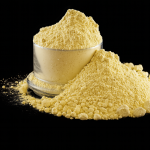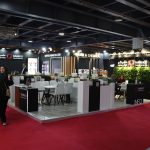Natural rubber (NR) is one of the most essential raw materials in the tire industry due to its superior mechanical and dynamic properties, still constituting a major part of tire compounds. In contrast, the development of synthetic rubbers (SR), such as Styrene-Butadiene Rubber (SBR) and Nitrile-Butadiene Rubber (NBR), aims to improve thermal stability and chemical resistance. This paper examines and compares the physical, chemical, and functional properties of natural and synthetic rubbers and analyzes their roles in tire performance from both technical and environmental perspectives. (Renner et al., 2021; Hirata, 2014; Deng et al., 2023)
Introduction
Tires are among the most critical components of vehicles, and their safe and efficient performance directly depends on the rubber composition used. Natural rubber is extracted from the latex of the Hevea brasiliensis tree, and its cis-1,4-polyisoprene chains provide excellent elasticity and good fatigue crack resistance. In contrast, synthetic rubbers are derived from petrochemical monomers and can be precisely engineered to achieve specific performance properties. (Markl et al., 2020; NIST, 1952)
Structural and Physical Properties
From a molecular perspective, natural rubber has a regular structure with cis carbon–carbon double bonds, which allows strain-induced crystallization that increases its tensile strength. On the other hand, synthetic rubbers such as SBR or EPDM are amorphous in nature and therefore lack crystalline order, resulting in lower flexibility. Studies have shown that the tensile strength of natural rubber ranges from 15 to 22 MPa with an elongation at break between 600–900%, while for SBR, these values are about 10–18 MPa and 400–600%, respectively. (Comparative Studies of Natural and Synthetic Rubber, 2015; Acta Mechanica Slovaca, 2021)
Applications in the Tire Industry
Modern tire formulations generally use both types of rubber. Natural rubber plays a key role in the tread and body plies due to its superior performance under dynamic loading, fatigue, and repeated deformation. In contrast, synthetic rubbers such as SBR are commonly used in inner layers and sidewalls because of their higher thermal and abrasion resistance. Industrial research indicates that the optimal tire performance is achieved when the NR:SBR ratio is around 60:40 or 70:30, as this combination provides a good balance between elasticity and thermal durability. (Bijina et al., 2022; Hirata, 2014; Deng et al., 2023)
Comparison of Mechanical and Thermal Properties
| Property | Natural Rubber (NR) | Synthetic Rubber (SBR/NBR) |
| Tensile Strength (MPa) | 15–22 | 10–18 |
| Elongation at Break (%) | 600–900 | 400–600 |
| Abrasion Resistance | Medium | High |
| Heat Resistance | Weaker | Better |
| Elastic Recovery | Very High | Medium |
| Chemical & Ozone Resistance | Lower | Higher |
| Low-Temperature Performance | Excellent | Moderate |
| High-Temperature Stability | Weaker | Good |
According to available data, NR maintains its properties better at sub-zero temperatures, while SRs demonstrate greater stability at temperatures above 80°C. (Acta Mechanica Slovaca, 2021; Sathyabama Journal, 2009)
Sustainability and Future Outlook
Despite its technical advantages, the production of natural rubber depends heavily on agricultural resources and climatic conditions, posing environmental challenges. Recent research projects such as the BISYKA Project aim to develop bio-inspired synthetic rubbers that mimic the mechanical behavior of NR but are made from renewable sources. This approach could reduce the tire industry’s dependency on natural resources and enhance the sustainability of the supply chain in the future. (Fraunhofer Institute, 2021; Cucci et al., 2025)
Conclusion
The findings indicate that natural rubber, due to its regular molecular structure and strain-induced crystallization, offers superior fatigue resistance and flexibility compared to synthetic rubbers. However, synthetic rubbers outperform NR in heat, abrasion, and chemical resistance. Currently, blending both materials provides the most effective solution to achieve high-performance tires with extended service life.












One Response
This was insightful, thank you for this article.